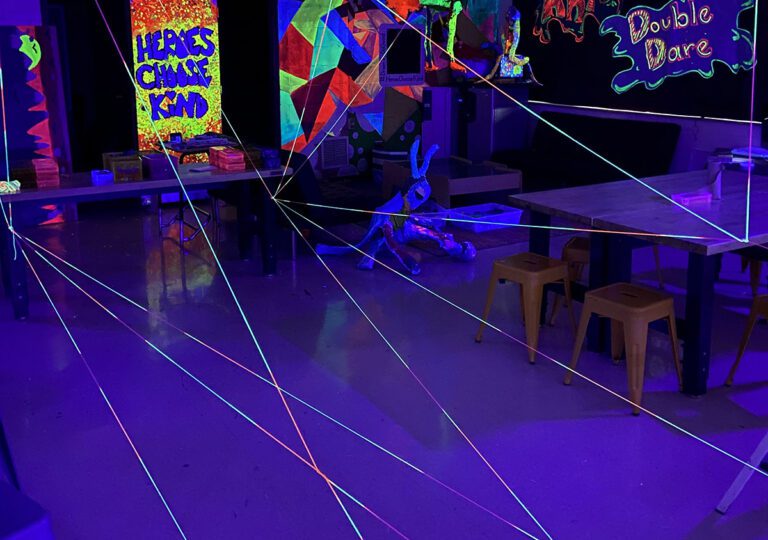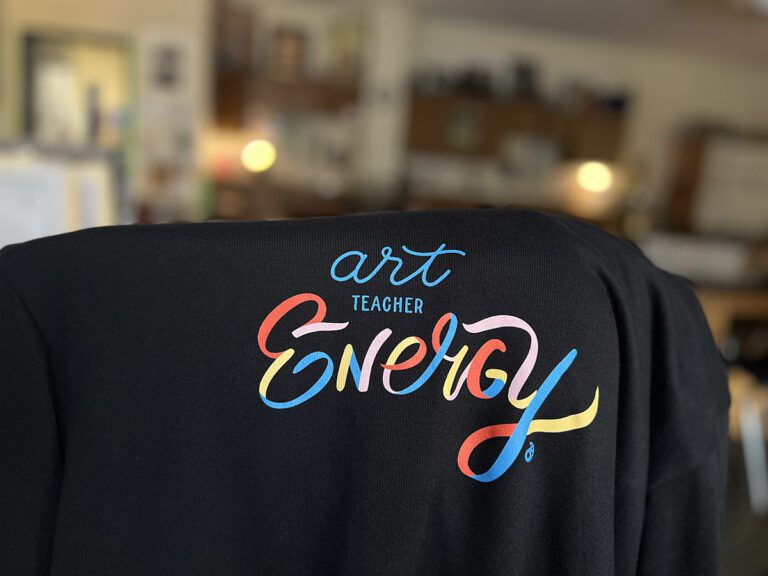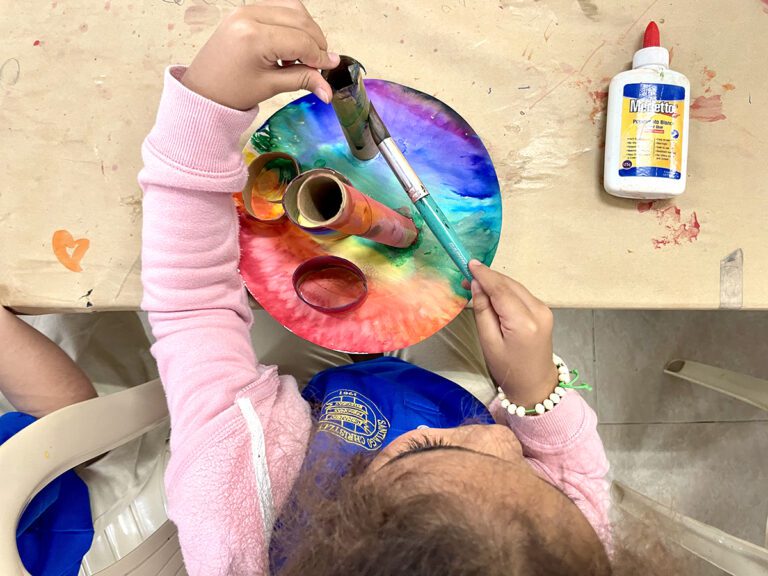What happens when students just don’t do their work? While students might struggle because of a learning disability or emotional need, this isn’t always the case. Students complain and come up with excuses. We work hard to set our students up for success. When students don’t fulfill our expectations, it’s hard not to take it personally.
Sometimes every little thing adds up to resentment and frustration. Your feelings are absolutely valid. However, it isn’t healthy to hold these frustrations, ultimately leading to burnout. In a time when toxic positivity is a real thing, just remember that you are not overriding or negating your feelings. Instead, focus on flipping the narrative to let go and move forward.

Here are a few common phrases and how we can flip the narrative to lead with empathy.
THOUGHT: “I came up with this amazing lesson, and my students just moaned and grumbled! These students are so lazy!”
FLIP IT: “I came up with this amazing lesson. I spent a lot of time on this, and I thought it would be really well received. I’m disappointed students were not as excited about it as I was. I wonder what part of this lesson is not exciting for them?”
- I wonder if they are just tired?
- Maybe this is too hard for them right now?
- How can I give them more personal choices?”
- Maybe it’s just an “off” day?
THOUGHT: “My student never turns in work on time. I give them every opportunity and still nothing. I don’t have time to grade late work constantly. This student is so inconsiderate.”
FLIP IT: “My student is struggling with time management and/or motivation. What supports can I add to help them reach checkpoints?”
- Am I chunking the assignment into small pieces?
- Am I checking in with this student to make sure they are making progress?
- What part of the process is an obstacle for my student? Do they have a hard time starting? Is it hard for them to feel finished?
THOUGHT: “Students never turn on their cameras during an online class. It is impossible to connect with them, and I feel so lonely.”
FLIP IT: “ I wonder what’s causing my students not to connect using video? Are there other ways they might connect with me and each other?”
- Does my student have an adequate internet connection?
- Are they embarrassed by their home situation?
- Are they managing siblings while learning from home?
- Is my student struggling emotionally?
- Is this student not interested in my class for some reason?

THOUGHT: “My student falls asleep in class. Why can’t they get better sleep at night? I’m tired, too, but I don’t fall asleep while teaching!”
FLIP IT: “I wonder why my student is struggling to feel rested and ready for class.”
- Does my student work late-night shifts?
- Do they have a medical or emotional issue I’m not aware of?
- Was my student up all night studying for a math test?
THOUGHT: “My student refuses to do work. They literally sit and refuse to do anything.”
FLIP IT: “I wonder why my student is not engaged with this class.”
- Is the student overwhelmed with creating?
- Does this student have low self-esteem?
- Does my student have an emotional issue I’m unaware of?
THOUGHT: “My student turned in someone else’s work. How ridiculous! How stupid do they think I am?”
FLIP IT: “Why would my student turn in plagiarized work?”
- Is my student feeling pressure to perform to a certain level?
- Does my student feel they cannot be honest with me?
- Did they forget to do the work and feel ashamed?
THOUGHT: “I’ve instructed and reminded students constantly how to turn in their work. They still submit it incorrectly. I’m so tired of telling them over and over again how to do this. They are just being lazy.”
FLIP IT: “Why is my student not turning in work the way I instructed?”
- I know not all students learn the same way. Did I provide visual instructions to help them remember?
- I know my students need a lot of repetition. Did I review this in class?
- Do other teachers require different turn-in procedures?
Flip the narrative: be curious!
You might have noticed a common thread. The statements above come from a place of frustration and judgment. The teacher feels personally offended by the student’s issue. Leading with empathy is important because it means coming from a place of curiosity instead of an assumption. Being curious allows us to stop judging students for what we don’t know. Instead of assuming a student doesn’t care about our class, we can ask ourselves why.

You might be thinking, “Yeah, but…!” Challenge yourself to consider what is in your control and what is simply not yours to hold. When we believe that our students are doing the best they can with what they have, we let go of assumptions and expectations that are not in our control.
Reflect and adjust.
If the issue is pervasive in your classroom and not just one or two students, your first thought should be, “What have I not done to prepare my students? What have I missed?” Be kind to yourself. Instead of feeling shame from failure, consider this a learning opportunity. Students are very forgiving, and you should be as well. If we aren’t getting the results we expect, it’s time to regroup, rethink, and try again.
For example, if you have been teaching very teacher-directed, explicit instructions for several months and then give a full, free-choice prompt, students will undoubtedly struggle. Instead of saying, “My students can’t handle choice,” consider what structures you have put into place to support their success. If the answer is none, then you can’t really blame your students for their subpar results or reverting to their comfort zones. This is a great learning experience to reflect and adjust.
Share the load and set boundaries.
Of course, you could be giving students every single support available, and they still may struggle. Some things are simply out of our control. That’s why there is a team of support at your school. Your team may be small, but know that it takes a village to support our kids. It should never be your full responsibility to bear.
After flipping the narrative, it’s essential to establish boundaries. Students learn best when given a clear structure and routine. If a student sends their work to you in an email instead of following your directions, don’t accept the work. Instead, sending a kind reminder such as this goes a long way toward building relationships.
“Thank you so much for sending me your work. For you to receive credit, please resubmit this work as instructed in class. I’ve attached instructions in case you forgot. Please let me know if you need any further help.”
Copying their parent (or case manager) on that email will keep communication clear and boundaries set.
Remember that our students are kids. They are navigating the world for the first time. While we live in a perpetual age bracket, watching students repeat the same behaviors over and over again, our students have not. This can certainly grate on us over time, especially as we are being asked to do more and more. Our students, however, are completely unaware of the burden we shoulder. It’s important to be kind and consistent.
What assumptions do you make about your students? How can you flip that narrative?
What resources and supports can you identify at your school that can help share the responsibility?
Magazine articles and podcasts are opinions of professional education contributors and do not necessarily represent the position of the Art of Education University (AOEU) or its academic offerings. Contributors use terms in the way they are most often talked about in the scope of their educational experiences.





